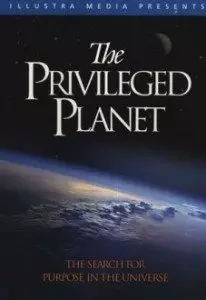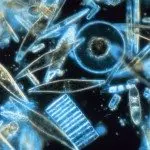We now know that a rare and finely tuned array of factors makes Earth suitable for complex life. We depend on our planet’s oxygen-rich atmosphere, its large moon, its planetary neighbors, and its precise location within the solar system and Milky Way galaxy. But the story does not end here. For, the same factors that make a planet like Earth hospitable to life also provide the best conditions for scientific discovery.
Is this correlation merely a coincidence? Or does it point to a deeper truth about the purpose of the cosmos and the reality of a transcendent designer? The answer could dramatically affect 21st century science.
“For Gonzales and other astro-biologists, these factors required for the earth’s habitability became the focus of extensive research. We’ve demonstrated, in dozens of different ways, the laws of physics and chemistry, that pertain in a laboratory anywhere on earth, apply anywhere in the solar system, apply anywhere in the galaxy and, in many cases, out to the most distant galaxies that we can see.
There are indeed unchanging, physical laws in the universe that apply to the entirety of the universe, that they are not localized to one place. This consistency in the laws of physics and chemistry has led many researchers to conclude, that the factors necessary for complex life on earth are also the best parameters in the search for habitable planets elsewhere in the universe.
Those serious discussions about this subject begin with the same prerequisite: Liquid water. Of the searches that are being done for life elsewhere, their starting position, is a terrestrial-class planet with water. It is now widely recognized that the chemical properties of water are exquisitely suited for carbon-based life. These properties include water’s ability to dissolve and transport the chemical nutrients vital to all living organisms, and its unmatched capacity to absorb heat from the sun, a process critical for regulating the earth’s surface temperature.
In liquid form, water is an extraordinary substance, and its existence hinges upon another factor essential to complex life — a planet’s distance from its home star. It’s like what they say in real estate: Location, location, location. A habitable planet lives in what we call ‘The Goldilocks Zone’. It’s not too hot, it’s not too cold. It’s just right. And when I say “just right,” I say, “just right for water”. Liquid water really helps define the habitable zone. If it’s too hot, again, the water just boils away. You just can’t get condensed water. If it’s too cold, as in Mars today, it freezes out.
Within our solar system, the habitable zone is relatively narrow, beginning well outside the orbit of Venus, and ending short of the orbit of Mars. If the earth were just five per cent closer to the sun, it would be subject to the same fate as Venus: A runaway greenhouse effect, with temperatures rising to nearly 900 degrees Fahrenheit.
Conversely, if the earth were 20 percent farther from its home star, carbon dioxide clouds would form in our upper atmosphere, initiating the cycle of ice and cold that has sterilized Mars.
The presence of liquid water is a necessary condition for life, but it’s not a sufficient condition. After all, there may be liquid water under the frozen surfaces of Mars and Jupiter’s moon, Europa. But there’s very little chance that complex life exists in either of these places. You see, contrary to what the Copernican concept might suggest, the recipe for life is much more complex than “just add water”.
THE PRIVILEGED PLANET is based on the book with the same title by Jay Richards and Guillermo Gonzalez. Production began in October 2002 and was completed in June 2004. The documentary presents the Richards/Gonzalez hypothesis that the Earth was designed to both sustain complex life and enable scientific discovery.
Get your copy of the FULL DVD documentary on the Creation Superstore!






